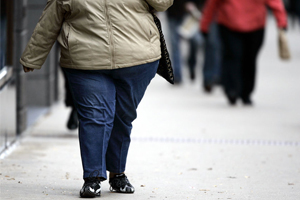With such an overwhelming problem as obesity in our country, it’s hard to pinpoint exactly what the causes are, and more importantly, what the solution is.
Countless speculations have been made as to what we can do to get our nation healthy and away from the dangers of obesity. But nothing has seemed to work thus far as the U.S. has seen no decrease in obesity rates in the last decade despite efforts to combat the problem.
One recent effort that showed the most promise was Michelle Obama’s ‘Let’s Move‘ campaign, which focused on getting Americans more active and eating healthier foods. One prong of the campaign was aimed at ‘food deserts,’ or areas in the U.S. that are mostly void of quality grocery stores, leaving these populations out of the reach of fresh fruits and vegetables and other healthy foods, and thus, more prone to obesity.
Perhaps it was her enthusiasm, confidence, or her first lady charm that brought throngs of people on board in support of the cause. But since her efforts to bring more grocery stores to these food barren areas, no measurable progress has been made, which has left people stumped as to what the real solution to obesity in our nation is.
According to a recent article in The New York Times, two new studies are providing reasons why we may be missing the mark.
They suggested we focus our efforts elsewhere – that food deserts aren’t the problem. That Americans aren’t getting fat and staying that way because of a lack of access to grocery stores. They’re getting fat because they either don’t know any better nutritionally, or because they have all the facts but are still making poor diet choices.
After examining several poor urban neighborhoods that were defined food deserts, researchers found they not only had more fast food restaurants and convenience stores than wealthier ones, but more grocery stores, supermarkets and full-service restaurants, too. And even more surprising? That there is no relationship between the type of food being sold in a neighborhood and obesity among its children and adolescents.
This left authors of the study questioning whether we should call these areas food deserts, or ‘food swamps’?
The findings almost seem like common sense – it’s about personal choices, not government aid. But many health experts were sure that ‘food deserts’ were the problem. There has been a ‘food desert locator’ created to pinpoint the most at risk areas in the country, as well an established “National Food Desert Awareness Month” in September to raise awareness.
But if these new studies are accurate, there is really no relationship between the type of food people eat, what they weigh, and the type of food within a mile and a half of their homes.
Evidence of this? One neighborhood in Camden, New Jersey – where parents said they had no trouble finding produce – 80 percent of the children there are eligible for free school lunches. But instead of taking the lunch, they opted for empanadas, sodas and candy from a local grocery store. This may just be one instance, but it proves in slight that the solution lies elsewhere.
It seems there must be a push for education, not only concerning the importance of proper nutrition, but how we can achieve it. Because even when given the option to choose healthier foods, Americans just aren’t biting.
Also Read:
Food Deserts Still a Problem Despite Let’s Move Initiative
Olive Garden Cuts Calories With Encouragement from Michelle Obama
